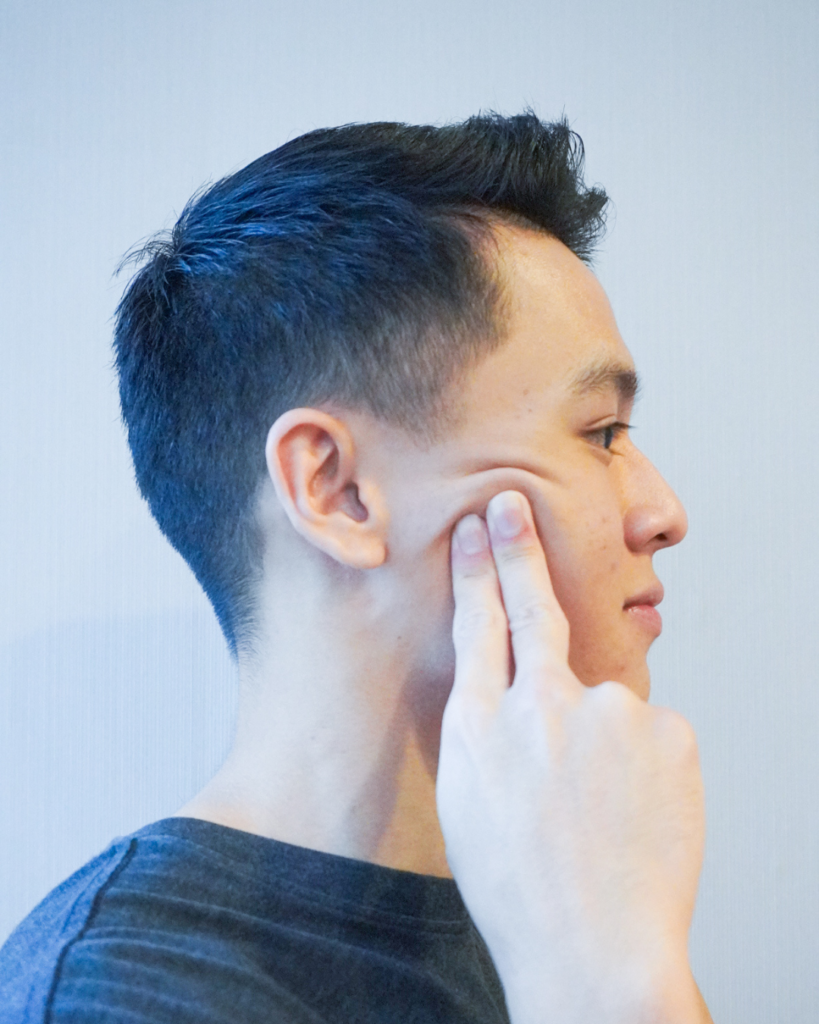
What is TMJ?
TMJ stands for Temporomandibular joint and this particular joint operates as a two-joint mechanism in one joint and allows our lower jawbone to rotate and slide. Anatomically, there is one joint (TMJ) on each side of our jaw that allows for movement when we talk, chew, and/or yawn.
Possible Causes of Temporomandibular Joint Disorder (TMJD)
TMJD a.k.a TMD can cause discomfort and pain in the joint area, ligaments and affect the muscles that surround, stabilise and move the jaw. The cause for TMJD is often difficult to determine due to the possible combination of factors such as, but not limited to:
The actual cause however, can be due to the strain on our jaw. The joint and muscle groups that allow for movement can strain over time through excessive use by causing the muscles to compensate, tighten and strain over time due to one or a combination of the causes noted above. The possible cause of TMJD is often also over a period of time where the combination of stress, excessive clenching, chewing and/or injury will lead to the deterioration of the jaws joint movement I.e misalignment causing pain, discomfort and/or headaches.

What are the symptoms of TMJD
(Temporomandibular Joint Disorder)
Symptoms of Temporomandibular joint Disorder can include:
Symptoms may vary and can manifest on one side of the face or both. It’s vital for anyone experiencing TMJD to get check due to its varied and myriad of causes and symptoms that affect one’s well-being.
How is Temporomandibular Joint Disorder diagnosed?
TMJD is diagnosed based on the patient’s symptoms. Often the doctor will ask specific health questions to learn more and get to know the patient’s symptoms, how long they’ve had them, how is it affecting their life, educate the patient on how the TMJ works and work with the patient if specific habits are contributing to their TMJD.

How do I know if I have TMJD?
Where can I go to treat TMJD?

TMJD can be caused by our excessive use of our chewing muscles and TMJ. One way it can lead to overuse is when a toothache arises and we naturally avoid the pain and chew on the other side causing excessive use of 1 side of the joint and muscle.

Yes, you heard us right, because one of the common causes of TMJ is due to excessive chewing. People who eat and snack often may cause wear and tear on the TMJ which leads to strain on the muscles and joints.

Although prevention is always best and surgery will often be the last resort for patients who possibly have serious TMJD. It’s important to note that if the condition in the TMJ area is consistent, with intense pain and tenderness while opening or closing your mouth it’s always wise to get a referral to a specialist doctor to check for any underlying causes of the pain in the TMJ.

5. Home Remedies
Types of Jaw Exercises You can do for TMJ Disorder
Remember to keep your head straight during this stretch. You should feel your upper trap muscle stretch
Neck Stretches
To do this stretches, it is advised to sit on a chair with no handles.
Step 1: Place right hand below the chair and hold on to edge.
Step 2: Place other hand on your head
Step 3: Gently pull your head to the opposite side to your left side
Step 4: Hold stretch for 30-seconds and repeat for 5 times.
Step 5: Repeat stretch on other side.
Remember to keep your head straight during this stretch.
Neck Turn
To do this stretches, it is advised to sit on a chair with no handles.
Step 1: Place both hand below the chair and hold on to the edges.
Step 2: Slowly turn towards your left and hold position for 5-seconds
Step 3: Slowly turn to your right and hold position for 5-seconds
Step 4: Repeat step when looking upwards and down.


Be gentle when massaging your TMJ to avoid causing discomfort
Jaw Massage
Use 2 fingers for this facial massage
Step 1: Place 2 fingers on the cheeks slightly below your jaw bone
Step 2: Push 2 fingers in and push upwards (it will be like forcing yourself to smile)
Step 3: Repeat the massage 10 times and rest
Do jaw massage alternate to the temple massage if you feel discomfort.




Be gentle when massaging your temple to avoid causing discomfort
Temple Massage
Use 2 fingers for this temple massage
Step 1: Place 2 fingers on your temple
Step 2: Rotate fingers forward
Step 3: Repeat the massage 10 times and rest
How can I decrease the risk for TMJ disorder?
In some instances, the symptoms of TMJD are caused by things out of our control, like as the way our normal bite fits together. However, in some cases, there are ways to reduce the risk of TMJD for instance:
Practicing good posture (bad posture often affects our head, neck, and shoulder muscles, tendons, and ligaments which are indirectly connected & contribute to the cause of TMJD)
Wearing a night guard, especially if you clench or grind your teeth.
Practicing relaxation and stress-reduction techniques (mindfulness & awareness).
When should I see a doctor?
If you feel extreme discomfort, persistent pain, or tenderness in your jaw, or you are unable to open or close your jaw. You should consult a doctor to discuss about the possible treatments that can be done to solve your problem.
scroll down for more